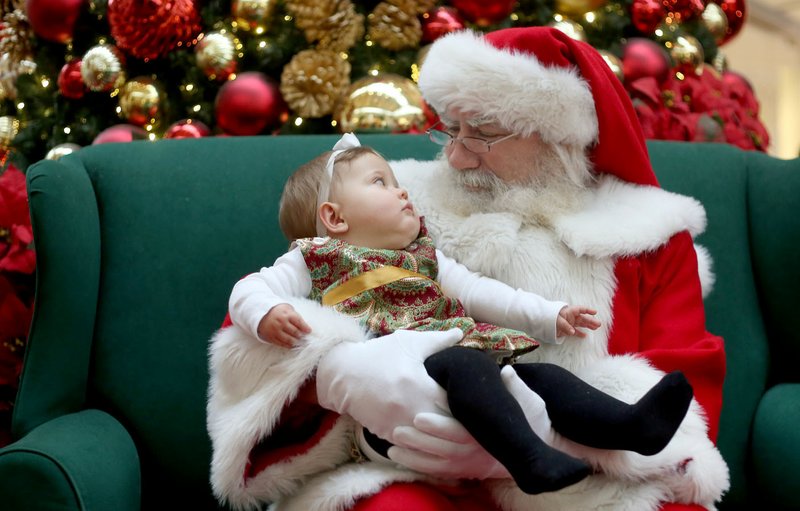"'Twas the night before Christmas, when all through the house
"Not a creature was stirring, not even a mouse.
FAQ
‘Here Comes Santa Claus’
WHEN — 10 a.m. to 4 p.m. Monday through Saturday until Jan. 4
WHERE — Rogers Historical Museum’s 1895 Hawkins House
COST — Free
INFO — 621-1154, rogershistoricalmus…
BONUS — The museum’s 19th annual Holiday Open House is set for 10 a.m. to 4 p.m. Saturday.
"The stockings were hung by the chimney with care,
"In hopes that Saint Nicholas soon would be there."
__
To many Americans, Santa Claus is defined by Clement Clarke Moore's 19th century poem "A Visit From Saint Nicholas":
"His eyes -- how they twinkled! his dimples how merry!
"His cheeks were like roses, his nose like a cherry!
"His droll little mouth was drawn up like a bow,
"And the beard of his chin was as white as the snow. ...
"He had a broad face and a little round belly,
"That shook, when he laughed, like a bowlful of jelly."
But an exhibit opening Saturday at the Rogers Historical Museum might change that perspective. According to Terrilyn Wendling, the museum's assistant director, "no one has influenced the way people around the world imagine Santa Claus more than Thomas Nast."
Born in Germany in 1840, Nast immigrated to New York with his family in 1846. In 1862, Moore claimed authorship of "A Visit From Saint Nicholas" -- previously published anonymously -- and Nast, by then a popular illustrator, was asked to draw Moore's St. Nick.
"Thomas Nast's Santa was a fat, jovial fellow in a red suit with brown fur trim," Wendling explains. And that was America's image of Santa for the next two decades.
"Nast's Santa had his list of good little children and the gifts they wanted, and he delivered those presents on Christmas Eve in his sleigh pulled by eight full-sized reindeer," Wendling goes on. He was also the first to settle Santa and his workshop at the North Pole -- "an ideal home for him," she explains, because it "made Santa the property of children around the world, rather than the citizen of any one country.
"The image we have of Santa today owes a great deal to Thomas Nast," Wendling says. "He is still as fat and jolly as ever," although at some point the fur on his suit, boots and cap turned white. Along the way, he also met Mrs. Claus, "who helps Santa by mending his outfit, baking Christmas cookies to feed Santa and his helpers and keeping the calendar to ensure that the Christmas preparations go smoothly."
But Santa's origins go clear back to a saint named Nicholas, born about 280 A.D., and that's where the story starts during the "Here Comes Santa Claus" Christmas tours of the museum's 1895 Hawkins House. Children -- of all ages -- can follow the tale from there through the 17th century Dutch "Sinter Klaas," dressed in bishop's robes and riding his great white horse, through the 19th century English Father Christmas to the turn of the 20th century when the Hawkins family would have been enjoying the holidays.
"In addition, the house will also be decorated in traditional pine boughs and holly," Wendling adds, and guided tours will be offered from 10 a.m. to 4 p.m. Monday through Saturday until Jan. 4.
NAN What's Up on 12/06/2019
